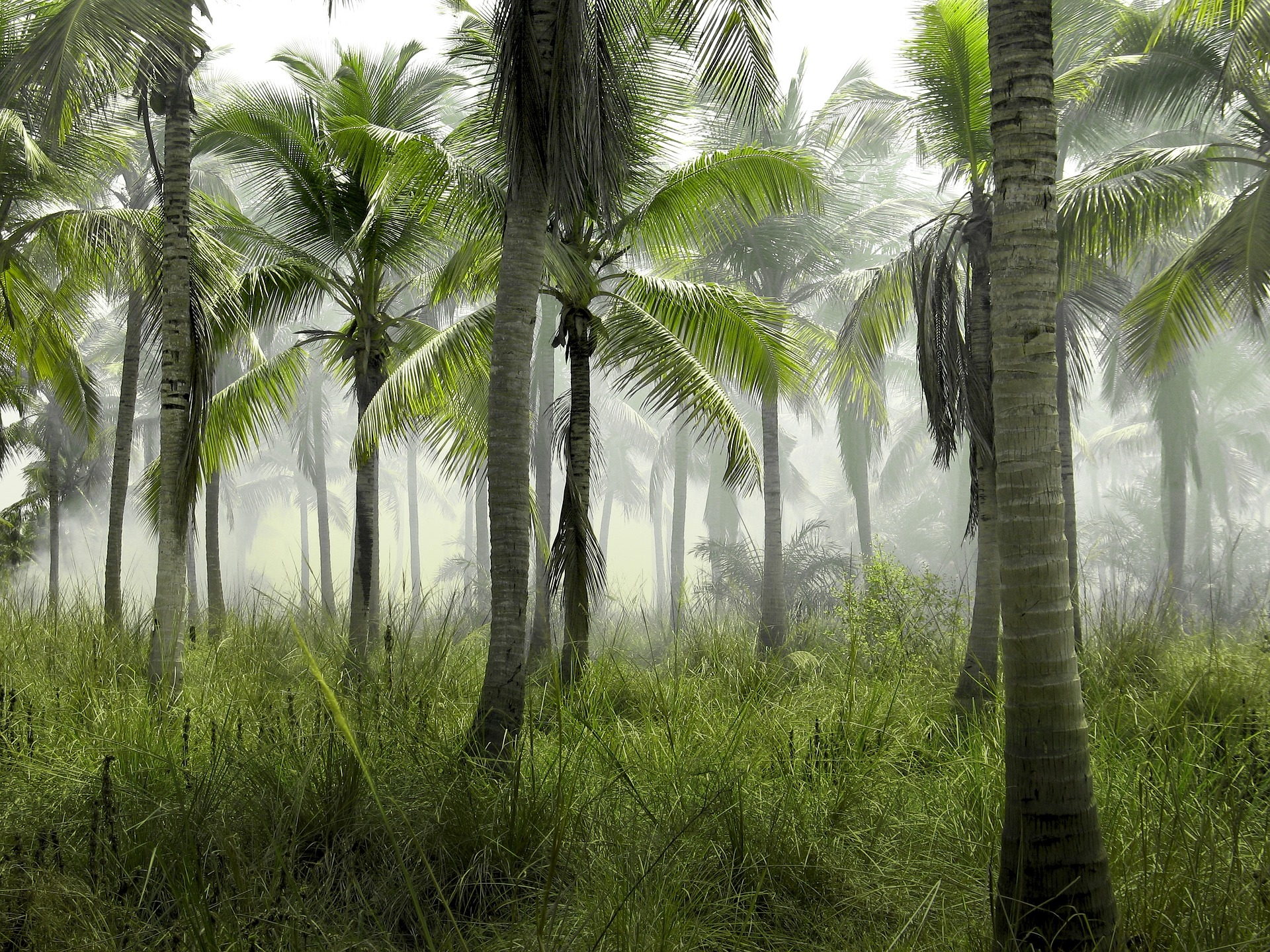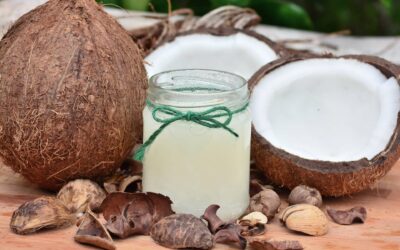A Detailed Overview of the Malaysian Palm Oil Industry.
Malaysia was amongst the countries introduced to the “Elaeis Guineensis” Plant by the British during the 1870’s. It was introduced as an ornamental plant which was growing wild in West Africa but was industrialized into an agricultural crop by 1917 in Malaysia.
Since 1960, Malaysia has experienced a rapid increase in palm farming. Over 2.8 million hectares was planted with palm trees from 1985 to 2007 and it had expanded to 4.917 million hectares in 2011. This has made Palm Oil the most significant commodity crop in Malaysia.
The Elaeis Guineensis Plant (Palm Tree)
The palm tree is a monoecious strain because it has both male and female flowers on the same tree. Every palm tree produces a compact bunch of between 10 and 25 kilograms in weight, with over 1000 and 3,000 small fruit per bunch. Each small fruit or better put, fruitlet is almost spherical or elongated in nature. Usually, the fruit is dark purple, close to , and the color turns orange-red when it matures or ripens. The fruitlets consist of a hard seed closed in a shell (endocarp) which is normally surrounded by a fleshy mesocarp.
The trees can grow up to about 60 feet or more with a rough trunk appearance with fronds which turns to be slightly smooth as the grow older and as the fronds wither and fall off from the trunk. The palm tree normally takes 30 months to bear fruits after planting and will stay productive for the next 20-30 years. The “tenera variety” is the oil palm tree planted in Malaysia which a hybrid of the “dura” and the “pisifera”. This plant produces about 5 tonnes of crude palm oil per hectare in a year and about 1 ton of Kernels. The palm tree is known to be the most efficient oil producing crop in the world. It can produce 1 ton of oil from just 0.26 hectares of land whereas sunflower, rapeseed, and soybean use up at least 1.52 and up to 2.22 hectares to produce a ton.
What is Palm Oil?
Palm oil is gotten from the tissue of the red fruit of the palm species E. Guineensis. Due to the high presence of carotene in the virgin form of the oil its color characteristic is of a splendid orange–red appearance. We can conveniently say Palm is nature’s blessing to Malaysia and palm oil, Malaysia’s blessing to the World.
At room temperature the oil is semi-solid due to its saturation level which is approximately at .50 percent. Palm oil is a great ingredient for frying because of the good resistance towards oxidation and heat even in adverse and prolonged high temperatures. Due to it’s performance in frying and economic benefits many manufacturers, fast food operating facilities, and households use palm oil for their frying oil blends.
Today, we can see palm oil replacing the conventional and commonly used hydrogenated seed oils such as canola oil and not to leave out soybean oil. Products such as french-fries, potato chips are fried with palm oil.
Malaysia’s Palm Oil Industry (An Overview)
In the South East Asian region, which is known to dominates the palm oil industry, Malaysia stands out at the second leading producer of palm oil. Malaysia and Indonesia combine produces over 85% of the total palm oil production in the world. Palm oil production in Malaysia is a key economic driver and a critical component for Malaysia’s GDP. It is estimated Malaysia’s yearly export of palm oil will reach about 16 million tones by 2020. Malaysia runs over 450 operating mills with over 245 mills situated in Peninsular Malaysia and over 208 in Sabah and Sarawak.
Malaysia Exported over 23,974,526 tons of palm oil related products in 2017 and a revenue of over $19.5 Billion as published by the Malaysian Palm Oil Board. Malaysia is known to hold over 28.2% of the total share in world export as of 2017. Malaysia plants Palms in over 5.8 million hectares of land all across Peninsular Malaysia, Sabah and Sarawak.
Malaysia’s second leading position of palm oil has made the country to experience a rapid growth in the industry. Due to a high level and continuous effort in R&D the downstream production is gradually growing into an industry itself. This is because of the numerous by-products the industry has been able to research on and pushed into the Palm oil Industry.
The Early Stages of Malaysia’s Palm Production
Under the Malaysian government agricultural diversification program, the government strive to reduce the country’s economic dependence on tin and rubber and began the early commercial planting in 1917 at the Tennamaran Estate located in Selangor which marked the beginning of the Palm oil industry in Malaysia.
The Malaysian government further implemented land settlement schemes which further boost the planting of Palm trees as the landless farmers were provided with extended hectares of land. This move from the Malaysian government was to eradicate poverty for the small land holders and landless farmers. This is the reason why the Palm plantations in Malaysia are largely controlled by the smallholder scheme and estate management system.
The original palm oil was refined in the early 1970s as the government called for industrialization. The emergence of refineries marks the introduction of various processed palm oil products.
In the 1980s, another important milestone marked the beginning of the oleochemical industry’s booming supply of palm kernel oil and palm oil. This has also made Malaysia a leader in oleochemicals to date. The most traded oil in the world is known to be Palm Oil and with Malaysia the second largest exporter of Palm oil in the world. By 2017, Malaysia’s exports represent 28.2% (as mentioned earlier) of world exports for Palm oil and its fractions, whether or not refined (excluding chemically modified) with as its top importer, importing 9,881,205 tons from Malaysia in 2017.
For Palm oil and its fractions, whether or not refined (excluding chemically modified and crude) Malaysia exports over 30.8% of world exports for this product with China as the lead importer, Importing over 688,020 tons in 2017
For Crude palm oil, Malaysia exports represent 21% of world exports for this product with as the top importer importing over 1,136,494 tons in 2017
As one of the largest exporter and producer of palm oil and palm oil products, Malaysia plays a significant role in sustainably meeting the world’s growing oil demand.
Processing Of Palm Oil To Final Products
One feature of the palm fruit is the fact that it produces two different types of oil – palm oil from pulp, and palm kernel oil from the kernel or the seed within the fruit. About 1 ton of palm kernel oil is also available for every 10 tons of palm oil. There exist Several Production operations to be used in other to produce a finished end product that meets the required standards and the end user’s requirements. The first step in the production process is to extract crude palm oil from the fruit at the factory.
After the crude palm oil has been obtained, it can further be refined to obtained a variety of palm products with a required quality. The refined outputs can further be treated it can be used which helps to reduce the processing cost which is beneficial for the end users.
Furthermore, The oil can also be fractionated through a simple crystallization and separation process to produce a liquid which is the Olein and a solid known as the stearin fractions with varied melting features. This gives the end product a great potential of different characteristics perfect for a huge range of non-foods and food products.
Malaysia can Export the following Palm and Lauric products;
Crude Palm Oil
The crude palm oil is the oil derived through mechanical expression from the fleshy pulp (Mesocarp) of the fruit of the Elaeis Guineensis. It contains carotenes which keeps its dark reddish color.
RBD Palm Oil
The refined bleached and deodorized palm oil is derived from the crude or semi-refined palm oil which has gone through a bleaching, deodorized and de-acidified process through physical means
RBD Palm Olein
The refined bleached deodorized palm olein is derived as a liquid fraction through the fractionation of palm oil after crystallization using controlled temperatures. It is mostly used for cooking and frying.
RBD Palm Stearin
Refined bleached and deodorized palm stearin is derived from the high-melting fraction obtained by a one-stage or several stages of fractionation of crude palm oil. It is immediately refined by neutralization with alkali, treated with bleaching earth or activated carbon and deodorized by steam.
RBD Palm Kernel Oil
This is palm kernel oil that is obtained from the kernel of the palm oil fruit. It is neutralized, bleached and deodorized through a physical process.
RBD Palm Kernel Olein
Palm Kernel Olein is the liquid fraction of the palm kernel oil derived when the oil is fractionated.
Crude Palm Kernel Oil
The Palm Kernel oil is obtained from the kernel of the oil palm fruit. It is quite similar to coconut oil and produced through the mechanical extraction of the kernels which are partially vacuum dried in the palm oil mills.
PFAD
Palm Fatty Acid Distillates are fat residues which are obtained through the production process of palm oil. These are degraded fats not required in the final production of the palm oil and thereby removed through a distillation process. They are largely used in candle productions, soaps and animal feeds
PKFAD
As PFAD, Palm Kernel Fatty Acid Distilates are residues derived from the productions process of the palm kernel oil.
Palm Acid Oil
Palm Acid Oil (PAO) is a feedstock of biofuel derived from the oil mill effluent (POME). This is a by-product obtained during the chemical refining of palm oil and is largely used for the mixing in the biofuel transportation fuel.
Glycerin
Glycerin also known as glycerol is the co-product derived during the splitting or transesterification of fatty acids. It is clear, odorless liquid. It is used in the cosmetic industry.
Palm Residue (soft/hard)
These are by-products obtained during the production process of palm oil like the EFB, fronds and trunks
Palm Kernel Residue
These are the by-products from the production of the Palm Kernel like the shell which is used for Charcoal production.
Top 10 Markets For Malaysian Palm Oil (2017)
is the top importer of Malaysian palm oil as of 2017. Close to 1.5 million tons of palm oil was imported by from Malaysia with an export value of close to $1.3 billion. holds close to 13.5% share in Malaysia palm oil export. is the top importer of palm oil in the world with over 20% share of total world import.
China
China is the second largest importer of Malaysian palm oil. China comes in second place in the world’s palm oil importation with close to 10.5% share of world’s import. China imports close to 700 thousand tons of palm oil from Malaysia with an import value of over $700 million as of 2017. China holds over 7% share in Malaysia’s export of palm oil.
Pakistan
Pakistan in the third largest importer of Malaysia’s palm oil, imported over 540 thousand tons with an import value of about $545 million. Pakistan holds over 5.5% share of Malaysia’s palm oil export and is the third palm oil importer in the world. Pakistan’s share value for world import of palm oil was at 6% as of 2017 with a 1% annual growth rate in recent years.
Netherlands
The Netherlands is the fourth importer of Malaysian Palm oil, importing over $545 million in import value for over 659 thousand tons of palm oil. The Netherlands holds over 5.5% share of Malaysia’s export of palm oil and a 5.9% share of worlds import of palm oil. The Netherlands stands as the fourth largest importer of palm oil as of 2017 in the world.
Philippines
The Philippines is at the fifth largest importer of Malaysian palm oil. The Philippines import over 477 thousand tons of palm oil from Malaysia with an import value of over $490 million, standing at a 5.1% share in Malaysia’s export of palm oil. The Philippines is the 34th world importer of Palm oil with over 0.5% share of world import with a growth in import quantity of 25% p.a since 2013 total growth in value of over 40%.
Viet Nam
Vietnam is the 6th importer of Malaysian Palm oil as of 2017, importing over 403 thousand tons of palm oil from Malaysia with an import value of over $415 million. This made Vietnam to hold over 4% share of Malaysia’s export of palm oil. Vietnam holds a 1.7 share in world importation of palm oil and the 13th largest palm importer in the world.
Turkey
Turkey is the was the 7th largest importer of Malaysian palm oil in 2017. Turkey imported over 350 thousand tons of palm oil from Malaysia with an import value of over $373 million occupying a 3.9% share in Malaysia’s export of palm oil. Turkey is the 17th largest palm oil importer in the world with a 1.3 share in the world’s import of palm oil. The export of Malaysian palm oil to Turkey is rapidly growing with a 75% growth in import quantity since 2013 and a growth in export value of 12% in 2016.
Iran, Islamic Republic
At the 8th position of Malaysia’s top export of palm oil is Iran. Iran imported over 321 thousand tons of palm oil from Malaysia in 2017 with an import value of over $330 million. Iran occupies over 3.4% share of Malaysia’s export of palm oil and 1.1% in world imports making Iran the 19th largest importer of Palm oil in the world.
Japan
Japan comes in at the 9th position of the largest importers of Malaysia’s palm oil. Japan imports over 270 thousand tons of palm oil from Malaysia and holds a 2.9% share of Malaysia’s export of palm oil with an import value of over $275 million. The growth in Malaysia’s export value of palm oil to Japan increased by 8% in 2016. Japan is the 14th largest palm oil importer in the world with a 1.6% share in world import of palm oil.
Saudi Arabia
At the 10th position of Malaysia’s export of Palm oil is Saudi Arabia. Saudi Arabia occupies a 2.7% share of Malaysia’s palm oil export with an import quantity of over 251 thousand tons and over $259 million in export value. The growth of Saudi Arabia’s import value of palm oil from Malaysia increased by over 123% in 2016 and the growth in export quantity increased by 40% p.a since 2013. Saudi Arabia is ranked the 25th largest palm oil importer in 2017 with only 0.9% share in world import of palm oil.
On the other hand, Malaysia’s import of palm oil witnessed an increased by 33.9% a 0.56 million tons if to be compared to the 0.42 million tons of 2016. This increase in import was due to the need to respond for the increased demand from the domestic producing sector which increased by 14.0%. Malaysia’s main import of palm oil was sourced from the neighboring leader of Palm oil production Indonesia.




